Spring had finally arrived in New York City, and with the warmer weather, I was excited to resume my explorations of Manhattan’s vibrant streets. After a busy holiday season that kept me traveling and occupied, I eagerly anticipated revisiting the Upper East Side, starting with a fresh look at East 59th Street. My journey began after volunteering at the Holy Apostles Soup Kitchen, where I spent the morning serving breakfast. Energized by the sunny, 48-degree day, I headed uptown, ready to delve into the unique character of Sutton and Beekman Places, neighborhoods known for their rich history and stunning architecture.
To kick off my exploration, I decided to have lunch at Bloomingdale’s East 59th Street, a New York institution. Specifically, I visited Flip, the popular restaurant located inside the flagship store on Lexington Avenue at 59th Street. Having enjoyed meals here during previous walks in the area, I knew Flip was the perfect spot to recharge. Tucked away in the lower level of Bloomingdale’s, Flip is renowned for its delicious hamburgers and sandwiches. This time, I opted for the Bavarian Burger, a hearty and flavorful choice that proved to be the ideal pick-me-up after a morning of volunteering.
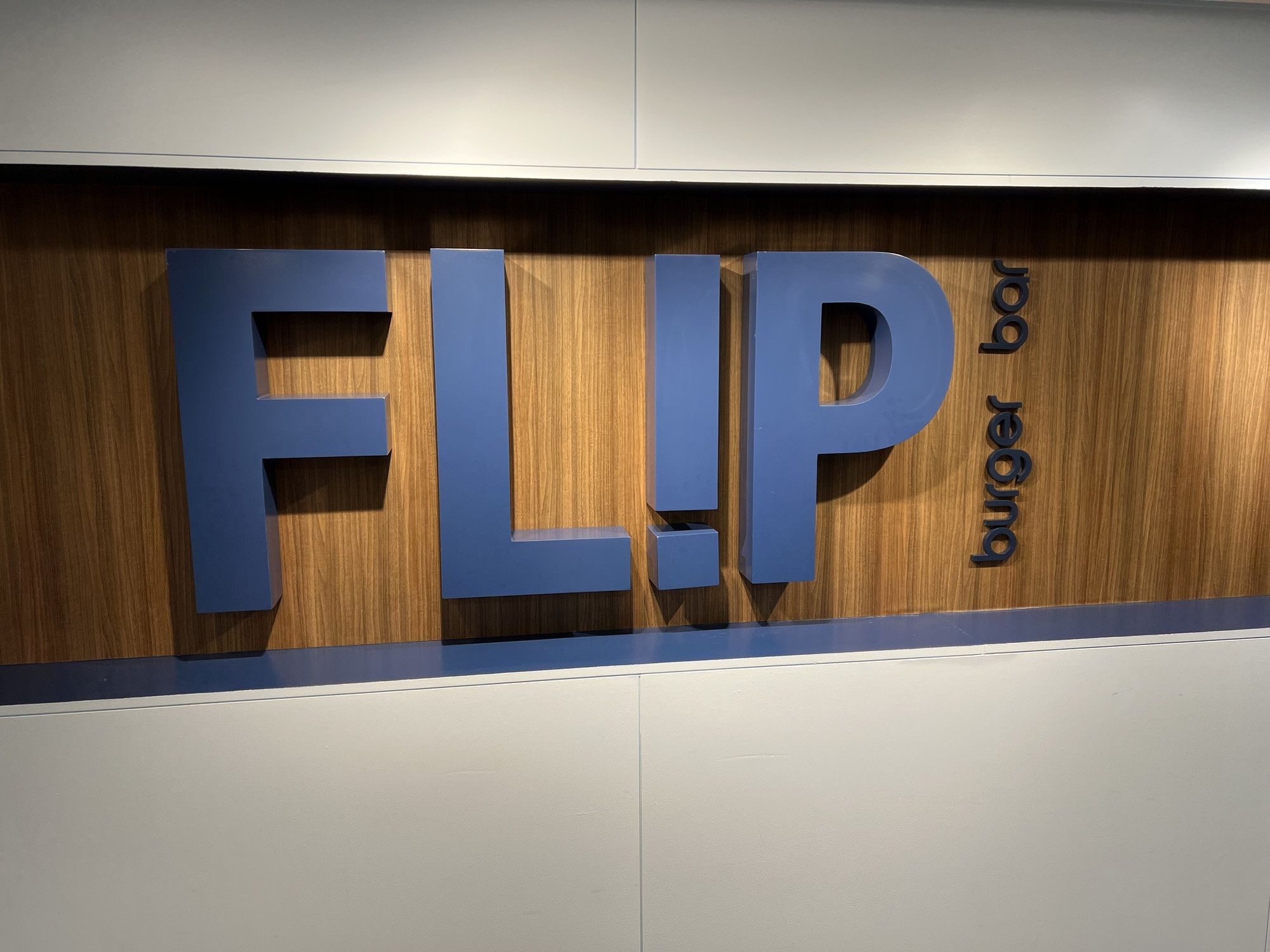 Bavarian Burger at Flip Restaurant in Bloomingdale's East 59th Street
Bavarian Burger at Flip Restaurant in Bloomingdale's East 59th Street
The Bavarian Burger at Flip was a culinary delight. It featured a perfectly cooked patty made from a blend of ground meat and short ribs, topped with sweet caramelized onions, smoky applewood bacon, creamy Brooklyn lager cheese sauce, and tangy homemade bread and butter pickles, all served on a soft pretzel roll with a side of crispy steak fries. Every bite was as good as it sounds, and I wholeheartedly recommend a visit to Flip whenever you’re shopping at Bloomingdale’s East 59th Street. You can find this hidden gem in the Men’s Department on the lower level.
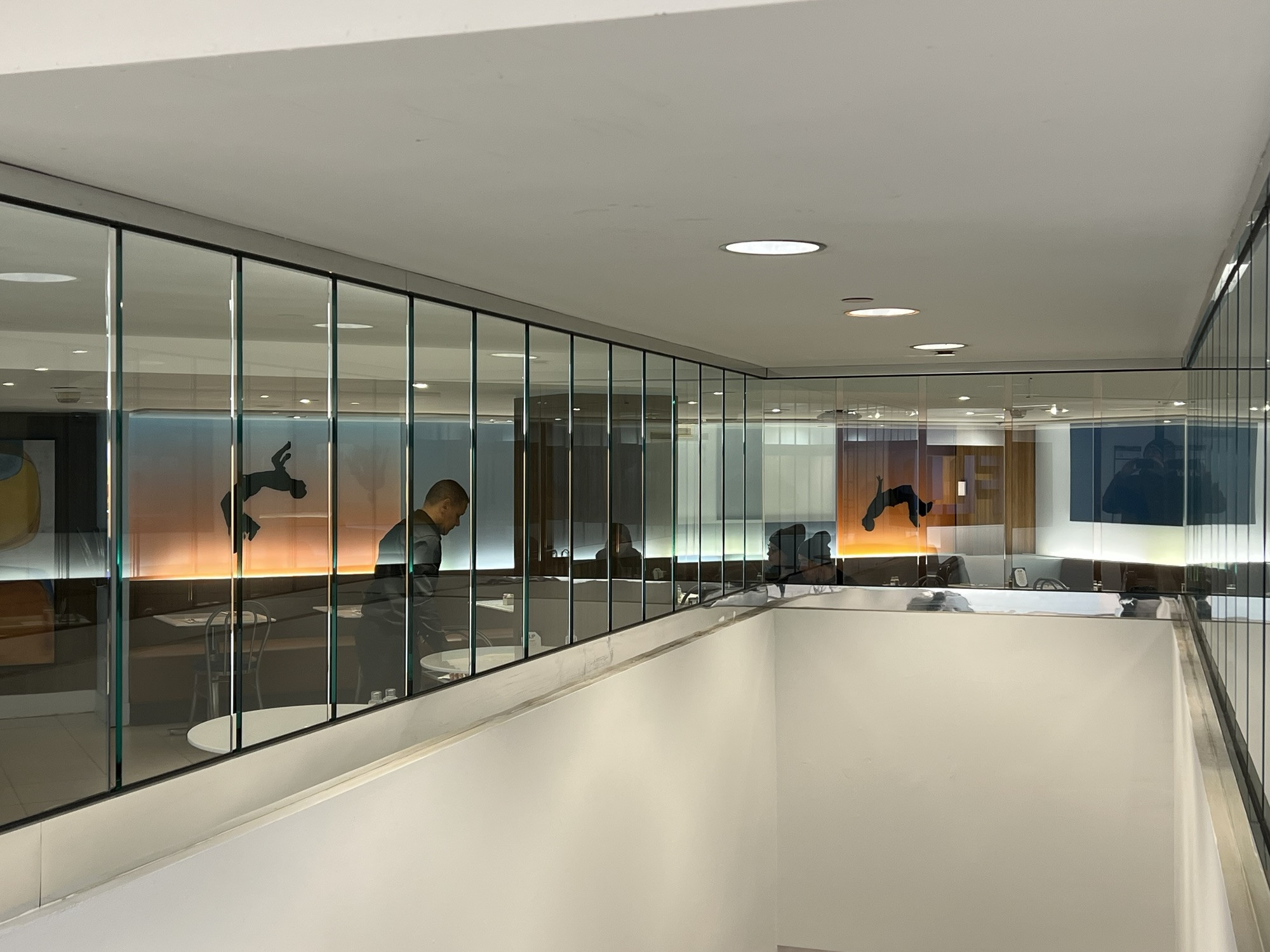 Flip Restaurant Located in the Men's Department of Bloomingdale's on East 59th Street
Flip Restaurant Located in the Men's Department of Bloomingdale's on East 59th Street
After a satisfying lunch, I started my walking tour at 24 Sycamores Park on East 60th Street. Needing a moment to relax after my meal, this charming pocket park offered a welcome respite. It was a beautiful day to sit on a bench, people-watch, and enjoy the peaceful atmosphere. 24 Sycamores Park is a hidden gem with an interesting backstory, created to address Upper East Side residents’ desire for more green spaces, responding to Robert Moses’ urban planning initiatives. From here, I planned my route through Sutton Place, Beekman Place, and Sutton East, areas bordering the Turtle Bay neighborhood.
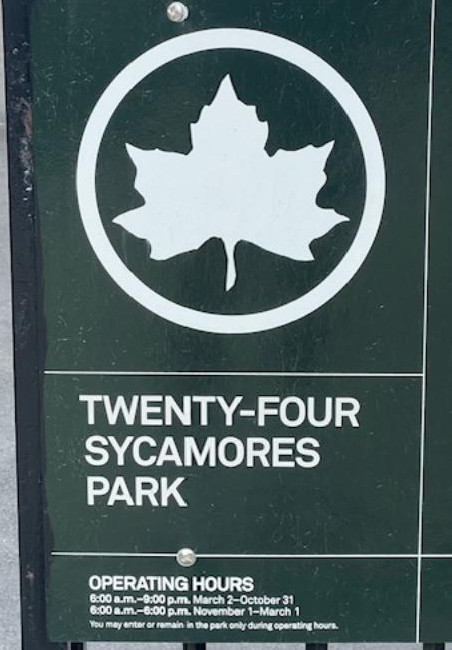 Welcome Sign to 24 Sycamores Park near Bloomingdale's East 59th Street
Welcome Sign to 24 Sycamores Park near Bloomingdale's East 59th Street
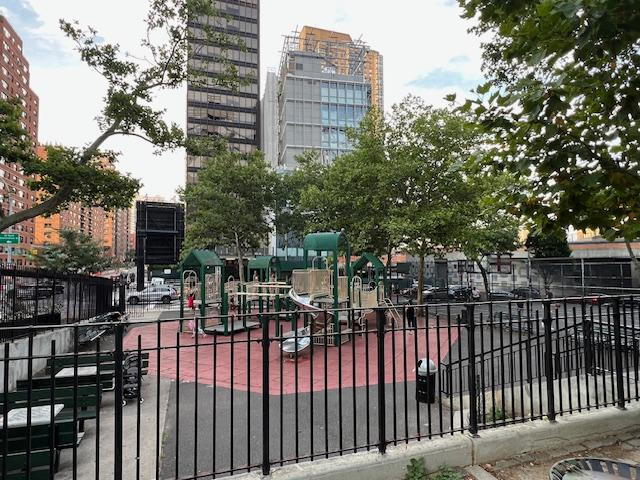 24 Sycamores Park on a Sunny Day in the Upper East Side
24 Sycamores Park on a Sunny Day in the Upper East Side
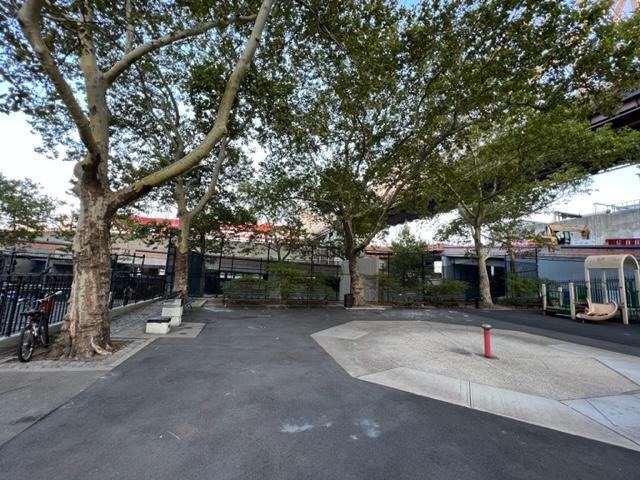 A Tranquil Corner of 24 Sycamores Park
A Tranquil Corner of 24 Sycamores Park
Refreshed after my park visit, I began walking along First Avenue. This avenue showcases a mix of elegant apartment buildings, classic brownstones, and grand mansions, depending on the specific block. The Sutton Place and Beekman Place areas maintain a secluded and exclusive ambiance. To truly appreciate the beauty of this neighborhood, it’s essential to explore the side streets and parks, discovering the unique elements that make it so special.
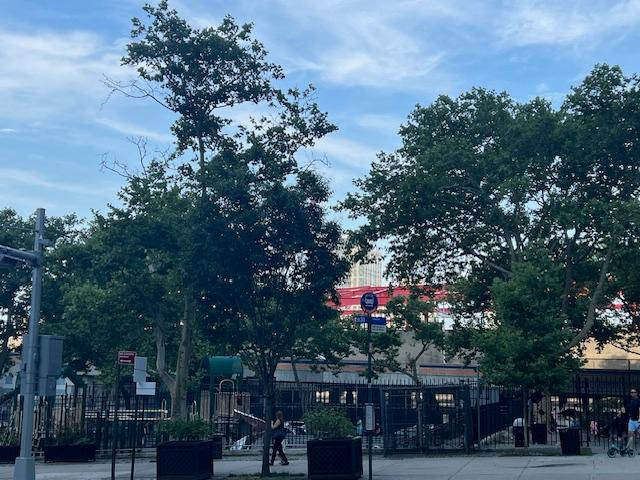 24 Sycamores Park in the Summer
24 Sycamores Park in the Summer
One notable observation during my walk was the number of storefronts closed on East 59th Street between Second and First Avenues. This trend mirrors a citywide increase in vacant retail spaces. Since my last walk in this area just three months prior, around half a dozen businesses had shut down. It raises questions about the future of retail in this part of Manhattan and what new businesses might emerge.
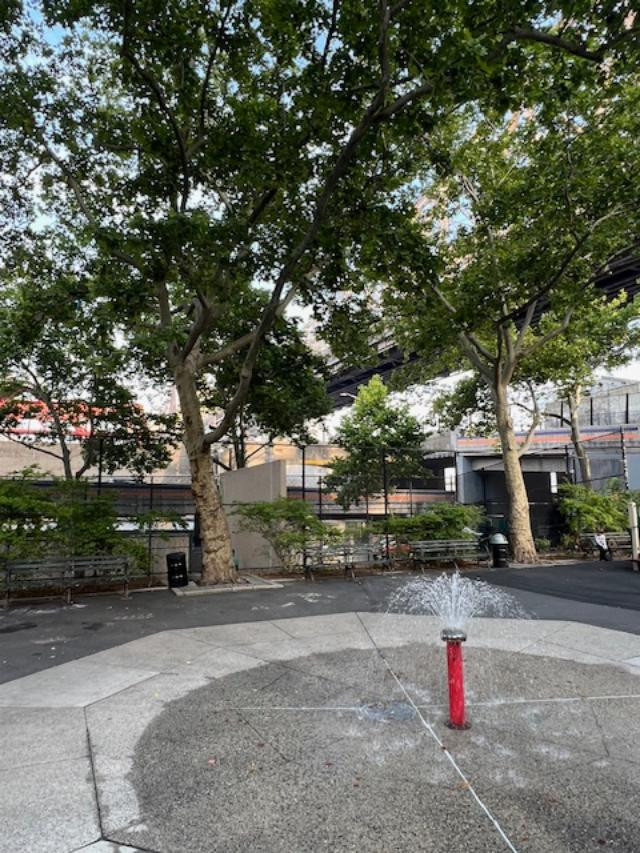 24 Sycamores Park in the Summer Sunlight
24 Sycamores Park in the Summer Sunlight
My walk continued, tracing the perimeter of Sutton Place from FDR Drive to Second Avenue, and from East 48th Street (near the United Nations) up to East 59th Street, marking the border with the Upper East Side. Along the way, numerous striking buildings and restaurants caught my eye.
Venturing down Sutton Place from Sycamore Park towards the United Nations, I noticed the street was lined with a diverse array of pre-war apartment buildings, modern co-ops, and interspersed brownstones and mansions.
Sutton Place owes its name to Effingham B. Sutton (1817-1891), a prominent shipping magnate who amassed his wealth during the Gold Rush. Sutton envisioned transforming the area, then characterized by small factories, into a residential haven and developed a series of brownstones between East 58th and 57th Streets. The Sutton Place Parks, stretching from East 59th to East 54th Streets along the East River, were established in 1938 following the construction of the FDR Drive, which cut off river access. Today, there are five parks along the East River, each accessible from the end of each block.
At the corner of East 59th Street and Sutton Place, the streetscape transitions to grand mansions. In 1883, this section of roadway was officially named Sutton Place, honoring Effingham Sutton, who had constructed the row of brownstone residences in 1875.
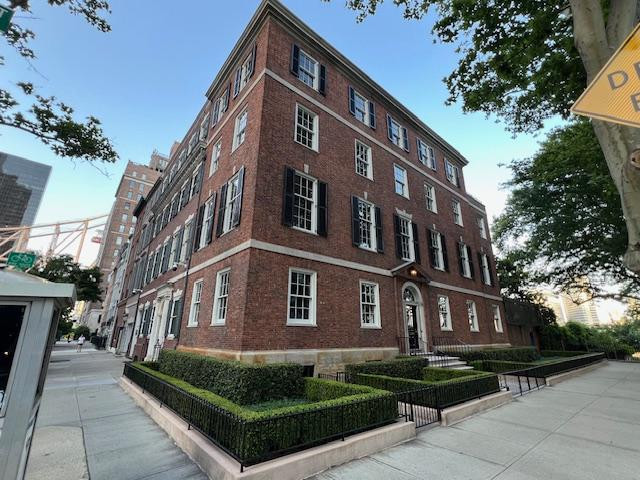 Vanderbilt and Morgan Mansions on Sutton Place
Vanderbilt and Morgan Mansions on Sutton Place
The magnificent mansion at 2 Sutton Place was once renovated by Anne Vanderbilt, the widow of William K. Vanderbilt. After selling the Vanderbilt mansion on Fifth Avenue, she acquired the Effingham Sutton House and commissioned architect Mott B. Schmidt to transform it into a 13-room Georgian-style mansion.
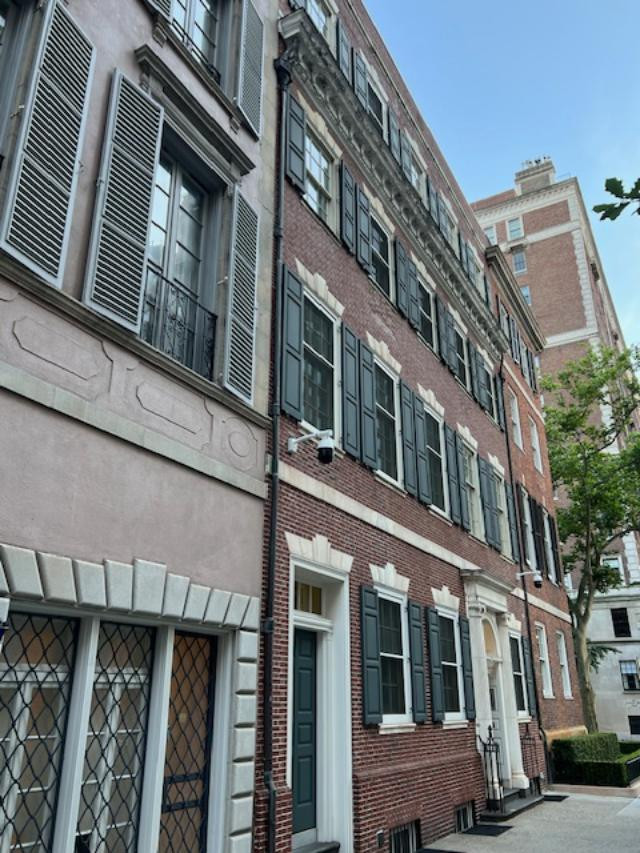 Anne Vanderbilt Mansion and Anne Morgan Mansion on Sutton Place
Anne Vanderbilt Mansion and Anne Morgan Mansion on Sutton Place
Neighboring the Vanderbilt mansion, Anne Tracy Morgan purchased 3 Sutton Place, located at the corner of Sutton Place and East 57th Street, and combined it with 5 Sutton Place. Mott Schmidt revised plans for Anne Morgan’s residence when she acquired 5 Sutton Place, merging the two into a four-story American Colonial style dwelling with a shared roof garden and garden with the Vanderbilt estate. To give the appearance of historical authenticity, Schmidt reused bricks from the original buildings. The project was completed in 1922.
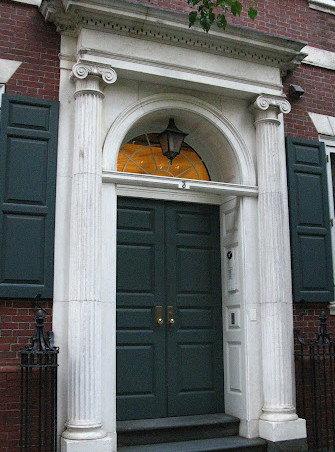 Entrance to the Vanderbilt Mansion on Sutton Place
Entrance to the Vanderbilt Mansion on Sutton Place
Walking along the side streets between East 58th and East 48th Streets, these dead-end blocks present stunning views of Roosevelt Island and the evolving Queens-Brooklyn waterfront, where former warehouses are being replaced by luxury high-rises and waterfront parks. Each street offers a unique perspective of Roosevelt Island.
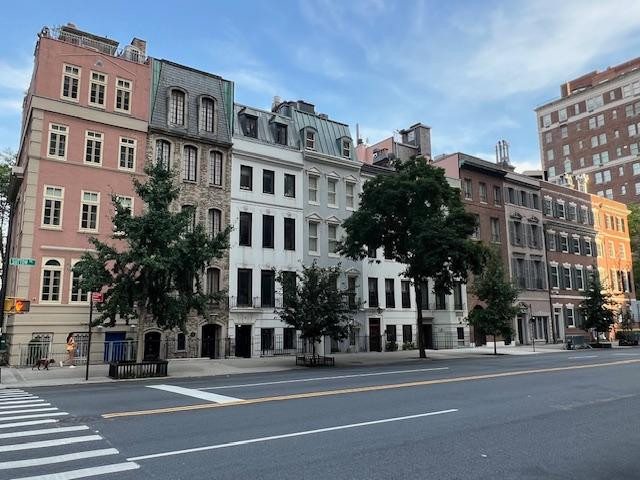 Historic Homes and Mansions of Sutton Place
Historic Homes and Mansions of Sutton Place
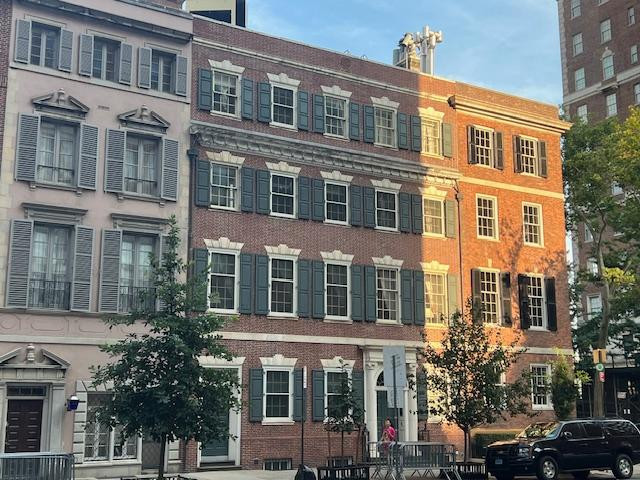 Vanderbilt Mansion at Sunset on Sutton Place
Vanderbilt Mansion at Sunset on Sutton Place
At the end of Sutton Place, at the corner of East 53rd Street, sits Sutton Place Park South, a small park overlooking the southern tip of Roosevelt Island and FDR Park. It’s a peaceful spot to unwind, enjoy the river breezes, and observe the traffic on FDR Drive.
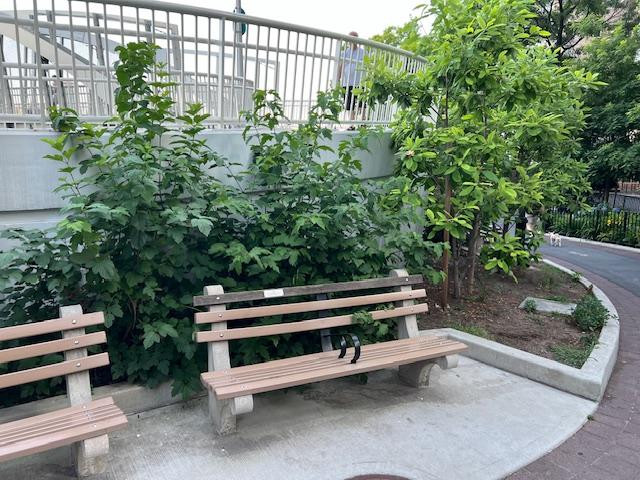 Sutton Place Park South at the End of Sutton Place
Sutton Place Park South at the End of Sutton Place
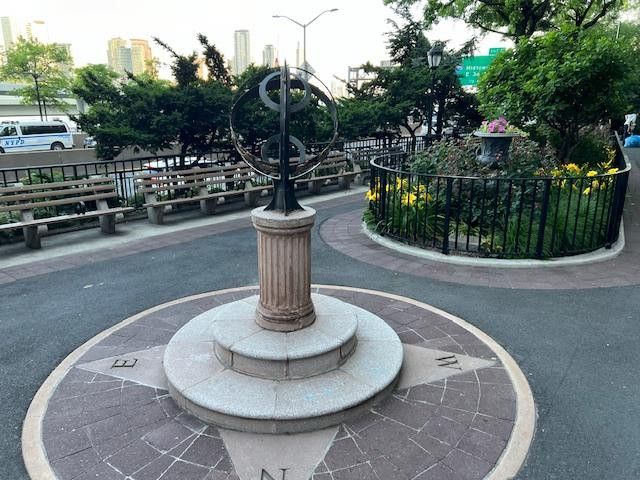 Sutton Place Park South with River Views
Sutton Place Park South with River Views
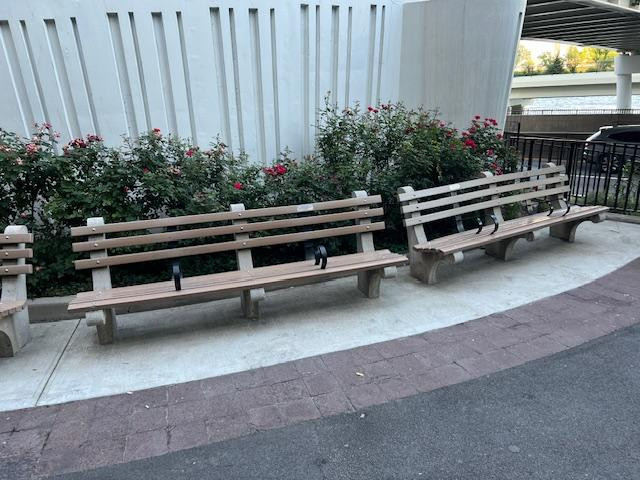 Renovated Sutton Place Park with Pedestrian Bridge
Renovated Sutton Place Park with Pedestrian Bridge
Number 11 Sutton Place once belonged to renowned architect I.M. Pei and his wife, Eileen, their home for 45 years. This four-story residence is now on the market for eight million dollars. I.M. Pei is celebrated for his iconic and innovative contributions to 20th-century architecture.
Sutton Place Park is a must-visit destination in Manhattan, offering spectacular views of Roosevelt Island and the Queens/Brooklyn waterfront. On a warm, sunny day, it is among the most relaxing parks I’ve discovered in my explorations of Manhattan.
 Sutton Place Park South with River Views
Sutton Place Park South with River Views
The park’s riverside location provides cool breezes, small gardens, and shady trees. Two dedications in the park caught my attention: one for Clara Coffey and another for Bronka Norak.
Clara Stimson Coffey, a landscape architect, became Chief of Tree Plantings for the NYCParks system in 1936 and contributed to the design of numerous parks, including Clement Clark Moore Park in Chelsea.
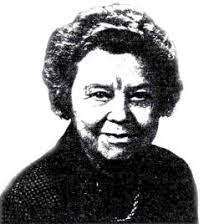 Clara Stimson Coffey, Landscape Architect
Clara Stimson Coffey, Landscape Architect
Bronka Norak, a long-time Sutton Place resident, was honored by her husband, Adam Norak, who established an endowment for the park’s flower, tree, and shrub maintenance after her passing.
On the west side of Sutton Place, pre and post-war apartment buildings line the street, each with doormen who keep a watchful eye on passersby.
Crossing back over East 59th Street, my walk continued onto First Avenue, an area undergoing significant transformation. Older buildings and storefronts are making way for new apartment complexes. Like much of Manhattan, this area is being redeveloped with upscale housing.
On a subsequent visit to Sutton Place, after another long day at the Holy Apostles Soup Kitchen, I walked from Ninth Avenue and West 28th Street to First Avenue and East 59th Streets. Despite the extra walking, the sunny, warm weather made it enjoyable.
For lunch, I stopped at Jimbo’s Hamburger Place at 991 First Avenue, a small, old-school diner that has been a neighborhood favorite for years. Jimbo’s is known for its wonderful food and reasonable prices, especially for this area.
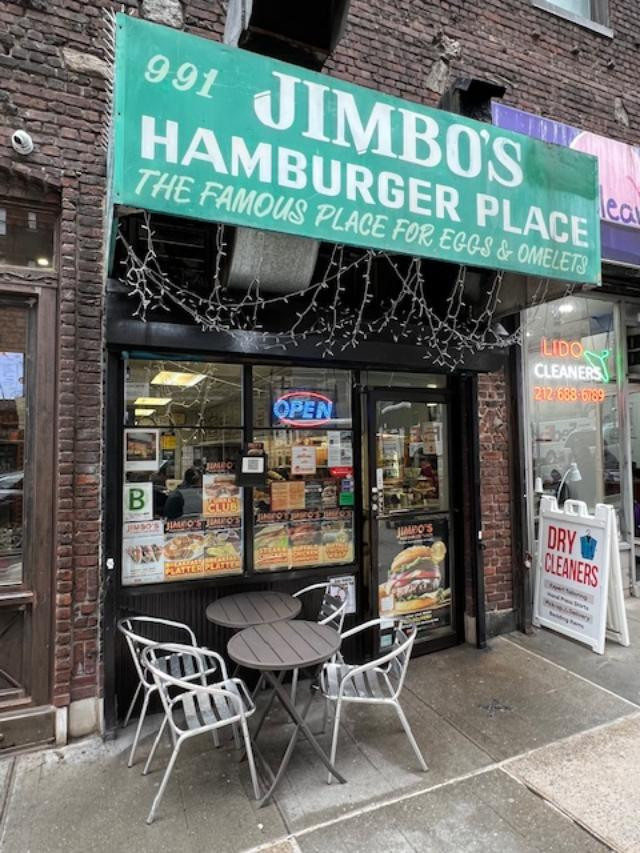 Jimbo’s Hamburger Place on First Avenue
Jimbo’s Hamburger Place on First Avenue
I ordered a cheeseburger with fries for $8.50. The burger tasted incredibly fresh, with perfectly cooked, caramelized meat. The fries were also made to order. The entire meal was delicious and satisfying. Chatting with long-time Sutton Place residents at Jimbo’s added to the experience, giving the place a warm, neighborhood feel.
 Jimbo’s Cheeseburger and Fries
Jimbo’s Cheeseburger and Fries
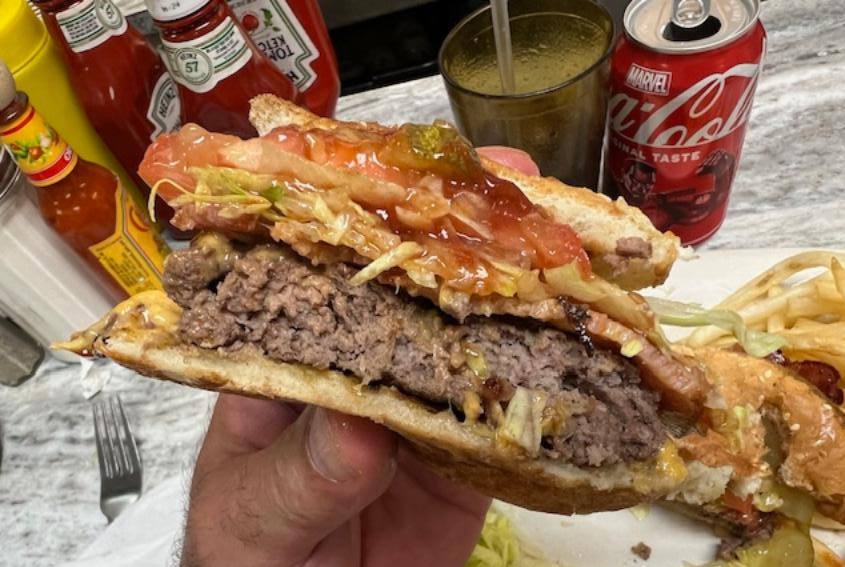 Juicy and Well-Cooked Burger at Jimbo's
Juicy and Well-Cooked Burger at Jimbo's
Continuing down First Avenue, I paused at 931 First Avenue, the site of a former elementary school built in 1892 in the Romanesque style. Instead of demolishing it, developers integrated the old school building into a modern office tower, creating an interesting architectural contrast. A plaque on the corner wall caught my attention.
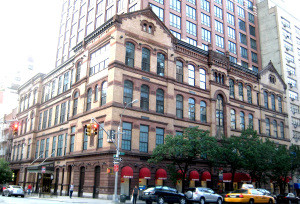 Beekman Place School Building Integrated into Modern Architecture
Beekman Place School Building Integrated into Modern Architecture
The school stood on the estate of patriot James Beekman, named Mount Pleasant, which served as British headquarters during the Revolutionary War. James Beekman (1732-1807) was a prominent New York City merchant from a family of influential merchants, lawyers, and politicians. His estate encompassed what is now Sutton and Beekman Place. It was also the location for the trial of Patriot Nathan Hale.
James Beekman, for whom Beekman Place is named, and his estate played a significant role in early American history.
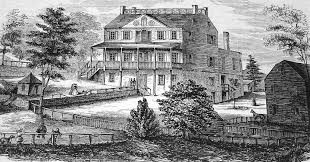 Mount Pleasant, The Estate of James Beekman
Mount Pleasant, The Estate of James Beekman
Mount Pleasant was relocated to First Avenue and East 50th Street when the street grid was implemented, before being demolished in 1874 during the post-Civil War real estate boom.
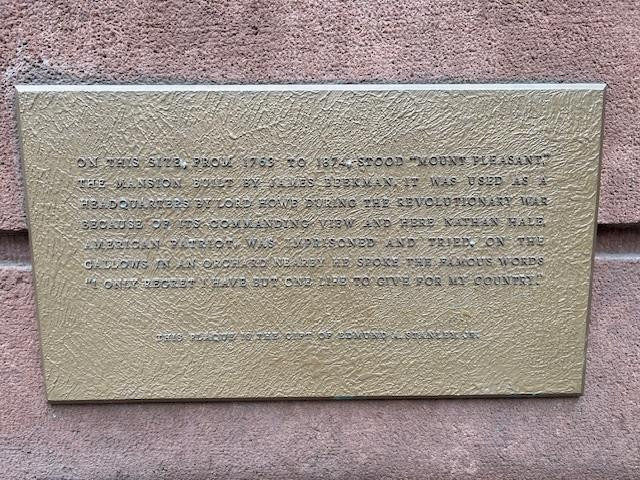 “Mount Pleasant” Plaque Marking the Original Estate Location
“Mount Pleasant” Plaque Marking the Original Estate Location
Walking further down First Avenue, I reached East 48th and 49th Streets, where the road divides into First Avenue and United Nations Plaza. This area is characterized by embassies, UN offices, and Trump World Tower at 845 United Nations Plaza, resulting in heavy traffic and tight security.
Turning east on 51st Street from First Avenue, I crossed the pedestrian bridge leading to Beekman Place and Peter Detmold Park, the former estate of James Beekman.
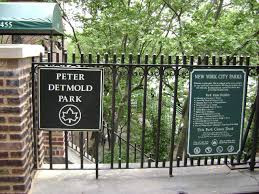 Bridge Leading to the East River Walk and Peter Detmold Park
Bridge Leading to the East River Walk and Peter Detmold Park
Peter Detmold (1923-1972), a World War II veteran and community activist, lived in Turtle Bay Gardens. He co-founded the Turtle Bay Association and the Turtle Bay Gazette, advocating for the area’s residential character. Tragically, he was murdered in his building in 1972, and the crime remains unsolved. Peter Detmold Park was named in his honor that same year.
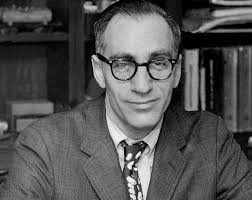 Peter Detmold, Activist and Veteran
Peter Detmold, Activist and Veteran
Before crossing the bridge, I descended the stone steps to explore the hidden park below. This secluded space, enclosed by stone walls and buildings above, features a popular dog park on one side and garden beds and benches on the other. Continuing through the park leads to General Douglas MacArthur Park and playground, which includes public restrooms.
General Douglas MacArthur Park and Playground is named after General Douglas MacArthur (1880-1964), a distinguished military leader with a career spanning five decades and multiple wars. He served in the Philippines, Mexico, World War I, World War II (as Supreme Allied Commander in the Pacific), and the Korean War. After retiring in 1951, he resided at the Waldorf Towers in NYC.
Originally part of the UN Plaza, the park was ceded to the City in 1966. It offers a playground, chess tables, flower beds, shade trees, and convenient public restrooms.
After visiting both parks, I returned to Peter Detmold Park, climbed the stone stairs, and walked along the riverfront promenade from East 51st to East 54th Streets. The promenade offers stunning views of Roosevelt Island and the Queens waterfront.
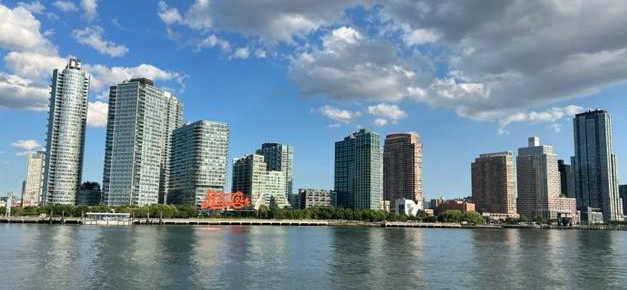 View of Long Island City Skyline from the Riverfront Promenade
View of Long Island City Skyline from the Riverfront Promenade
The transformation of the Queens and Brooklyn waterfronts over the past fifteen years is remarkable. Luxury housing, boat slips, and parks now line the coast, providing exceptional views of Manhattan’s East Side.
Exiting the park, I entered Beekman Place, a quiet, tree-lined street with brownstones and pre-war apartment buildings, an enclave of older homes and embassies.
Beekman Place is a serene and architecturally rich neighborhood.
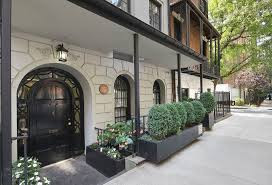 21 & 23 Beekman Place, Historic Residences
21 & 23 Beekman Place, Historic Residences
Many famous residents have called Beekman Place home. Stage actress Katharine Cornell and her husband, Guthrie McClintic, lived at 23 Beekman Place. Cornell was a celebrated Broadway actress, known for roles in “The Barretts of Wimpole Street” and “Antony and Cleopatra.” Ellen Biddle Shipman, a renowned landscape architect known for her formal gardens, resided at 21 Beekman Place. She designed Longue Vue Gardens in New Orleans and the Sarah P. Duke Gardens at Duke University.
Walking to the end of these streets facing the river offers spectacular views of the Queens waterfront and Roosevelt Island. Along East 51st, East 50th, and Mitchell Place, various embassies are located.
Mitchell Place marks the edge of the neighborhood, where the Beekman Tower stands at 31 Mitchell Place. Originally named ‘The Panhellenic,’ this Art Deco tower, designed by John Mead Howells, was built in 1927-1928 as a residence for women of Greek sororities working in New York City. Today, it serves as a corporate apartment building.
Walking back up First Avenue, Zeze Flowers at 938 First Avenue caught my eye with its stunning floral displays. This flower shop is more like a floral art museum, with captivating window displays and exotic flowers.
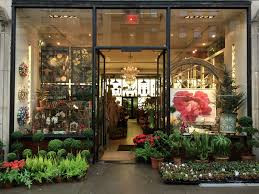 Zeze Flowers Shop on First Avenue
Zeze Flowers Shop on First Avenue
Inside Zeze Flowers, the beauty continues with artistic displays, statuary, and orchids. The store itself is a work of art, with bouquets and arrangements resembling paintings.
Passing the former site of the Beekman Mansion again at First and East 51st Street, I admired the renovated Beekman Regent building at 351 East 51st Street. Originally P.S. 135, designed in 1892 by George W. Debevoise, it later became the United Nations School and is now a luxury apartment building, recognized with the 2002 Mercedes Benz Property Award.
 Beekman Place School Building Integrated into Modern Architecture
Beekman Place School Building Integrated into Modern Architecture
Continuing up First Avenue, I walked past numerous restaurants. Noticing more storefront vacancies, I recalled eating at Go Noodle at 1069 First Avenue during a previous Upper East Side walk.
 Go Noodle Restaurant on First Avenue
Go Noodle Restaurant on First Avenue
Go Noodle offers reasonably priced lunch combination platters. Their chicken with string beans and egg roll is a tasty and affordable option.
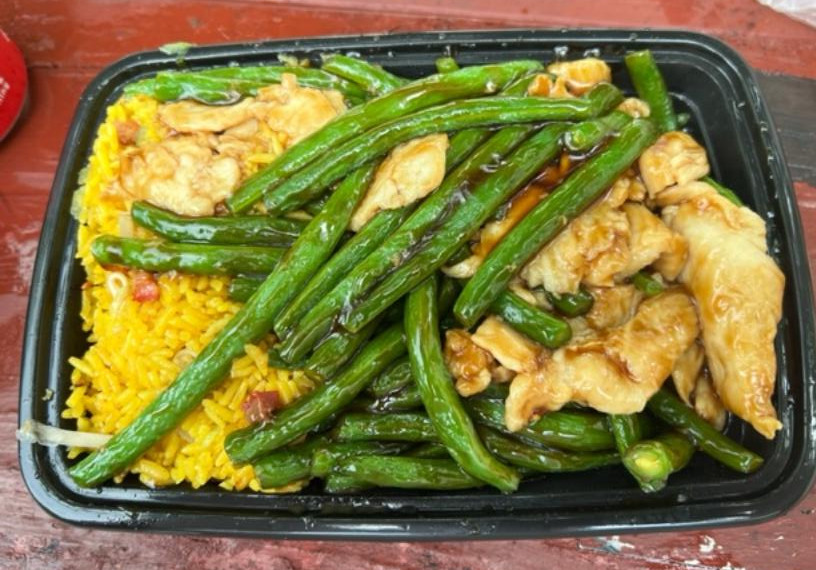 Chicken and String Beans at Go Noodle
Chicken and String Beans at Go Noodle
Reaching East 59th Street again, I observed the evening traffic building up on the Queensboro Bridge. 24 Sycamores Park was still lively with families. Tired but satisfied, I decided to continue my exploration another day.
Returning to the neighborhood a week later, on another sunny day, I started at East 59th and Second Avenue. Technically Turtle Bay, the area between First and Second Avenues from East 59th to 49th Streets is sometimes called “Sutton East” by real estate developers. I ventured down Second Avenue to explore “Sutton East.”
Second Avenue between East 59th and East 48th Streets is a mix of buildings. South of East 51st Street, larger office and apartment buildings prevail, while north of East 51st Street, older brownstones and smaller apartment buildings house local businesses, preserving the unique character of Sutton Place and Turtle Bay’s borders.
Lunch this time was at Mee’s Noodle Shop at 930 Second Avenue. Mee’s is known for fresh, homemade dumplings and noodles, made on-site.
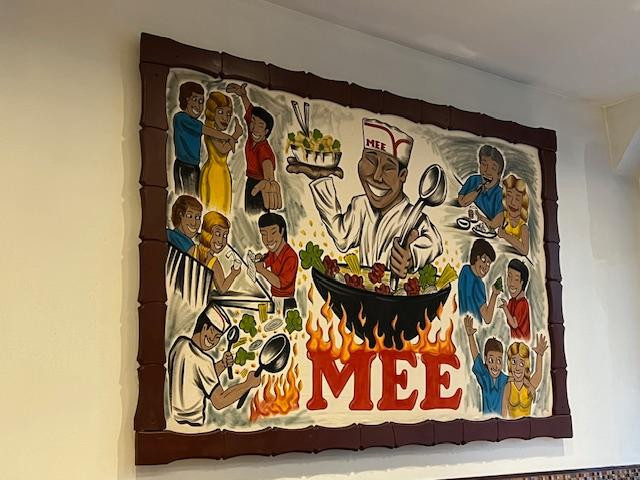 Mee’s Noodle Shop Sign
Mee’s Noodle Shop Sign
Since it was Good Friday, I chose seafood dishes, starting with steamed seafood dumplings filled with crab, shrimp, and scallop.
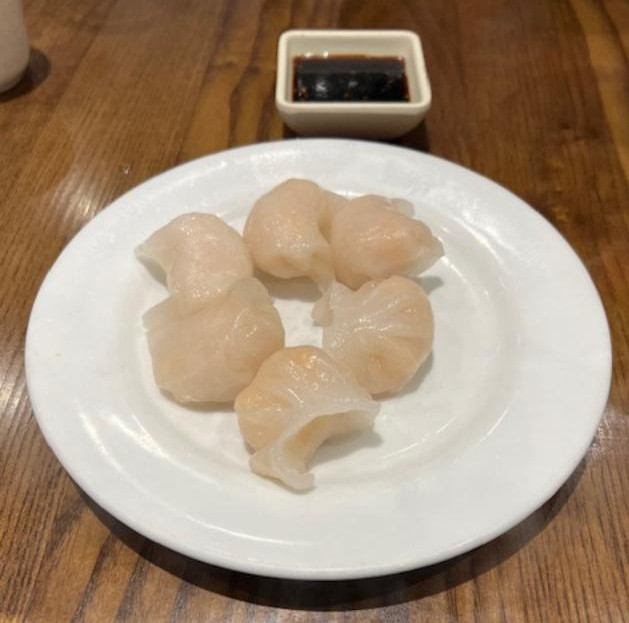 Seafood/Shrimp Dumplings at Mee’s Noodle Shop
Seafood/Shrimp Dumplings at Mee’s Noodle Shop
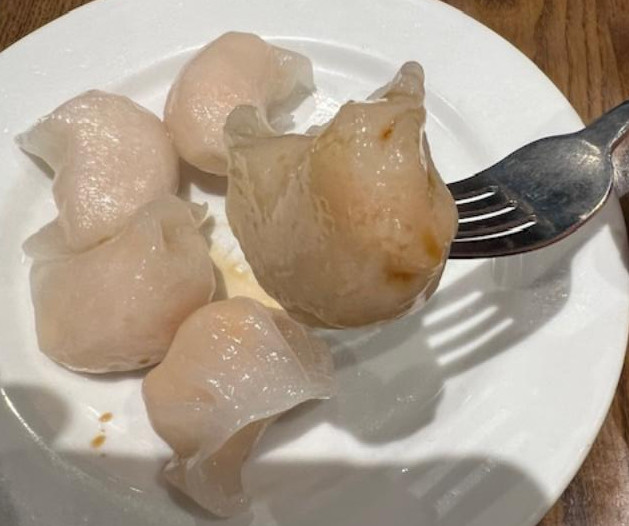 Light and Airy Dumplings at Mee's
Light and Airy Dumplings at Mee's
 Delicious Seafood Dumplings
Delicious Seafood Dumplings
For the main course, I had Shrimp Lo Mein. The fresh, homemade noodles and generous portion of shrimp and vegetables, including bok choy, made it particularly delicious.
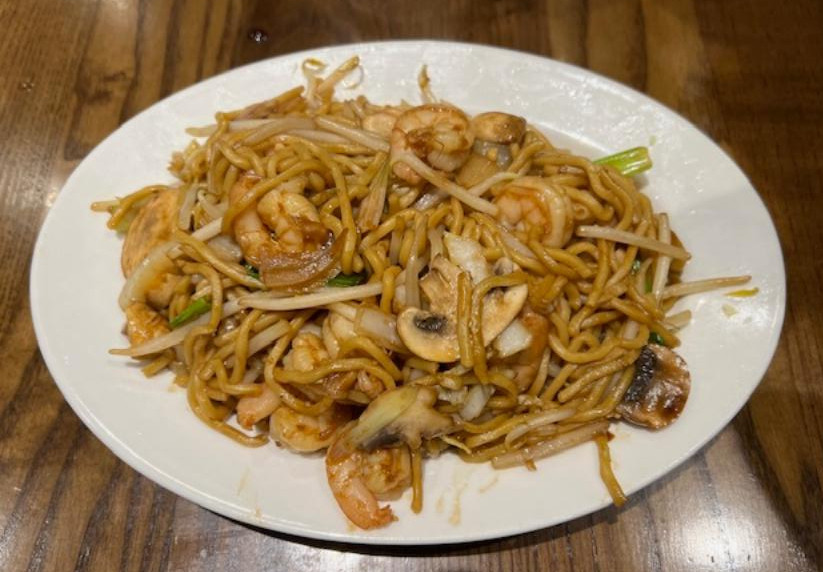 Shrimp Lo Mein at Mee’s Noodle House
Shrimp Lo Mein at Mee’s Noodle House
 Excellent Lo Mein with Generous Shrimp
Excellent Lo Mein with Generous Shrimp
After lunch, I explored Second Avenue, noting the diverse restaurants, from coffee shops to Italian, Continental, German, Thai, and pizzerias. The mix of buildings on Second Avenue adds to its character. Katherine Hepburn Place by Sterling Plaza, at Second Avenue and East 49th Street, offers a pleasant park for relaxation.
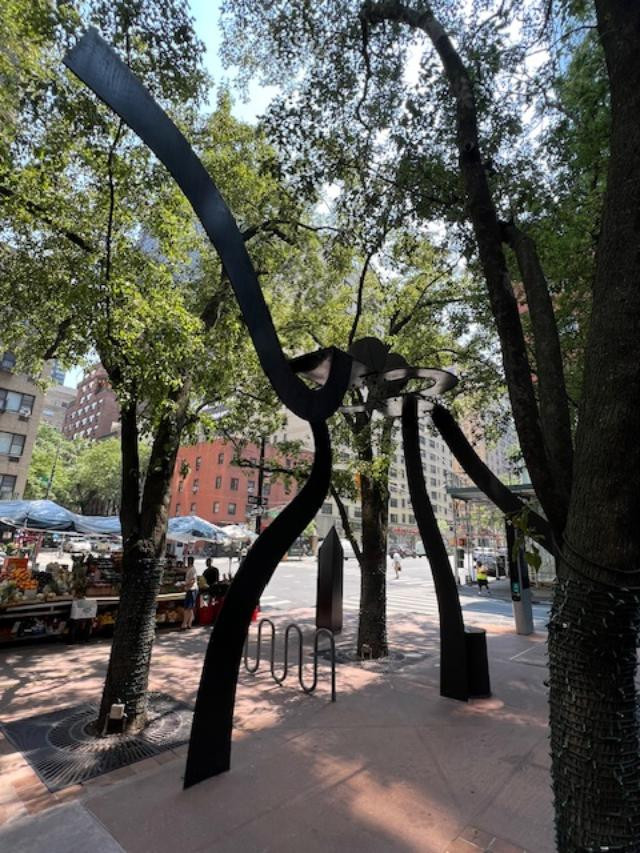 Sterling Plaza Park, a Relaxing Green Space
Sterling Plaza Park, a Relaxing Green Space
Walking back towards East 59th Street, I observed more small businesses closing between East 57th and 59th Streets. At East 59th Street, the traffic for the Queensboro Bridge, the Roosevelt Island Tram, and pedestrian activity create a bustling atmosphere.
For a quick bite, I visited La Vera Pizza at 922 Second Avenue and enjoyed a delicious Sicilian slice.
Crossing East 48th Street, the neighborhood character shifts from brownstones to more office and apartment buildings. Between East 58th and East 49th Streets, a block-by-block transition is evident.
Exploring the side streets, I discovered hidden gems. Starting on East 59th Street, I noticed more store closures since my last visit. Turning onto East 58th Street revealed antique stores, florists, and restaurants, along with striking views of the Queensboro Bridge.
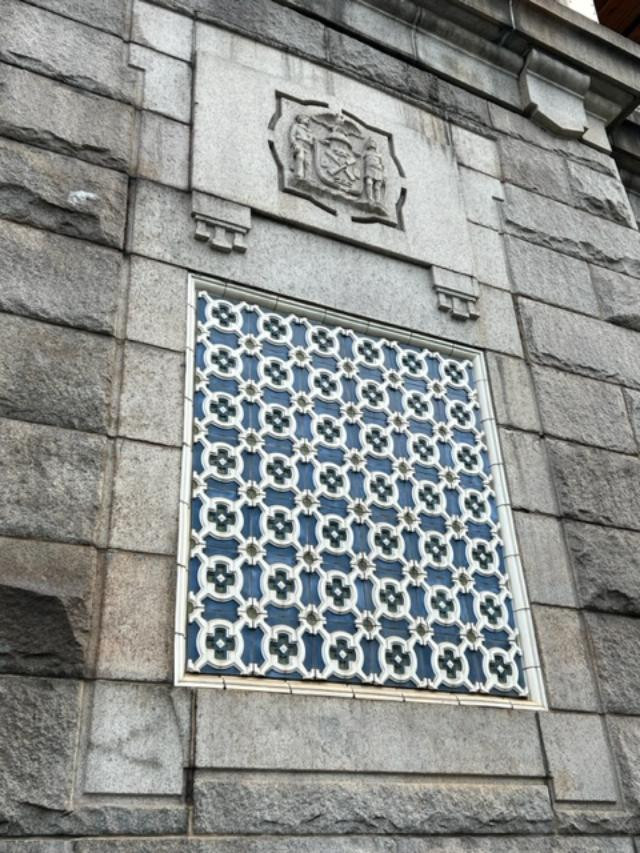 Ed Koch Queensboro Bridge on East 59th Street
Ed Koch Queensboro Bridge on East 59th Street
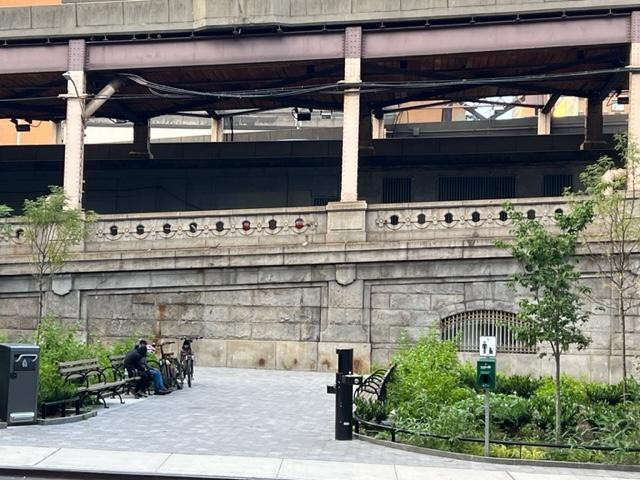 Detailed View of the Ed Koch Queensboro Bridge
Detailed View of the Ed Koch Queensboro Bridge
Turning onto 58th Street towards the Queensboro Bridge entrance, two small brownstones at 311 and 313 East 58th Street stand out. Built in 1856-57 in the Greek Revival-Italianate style, 311 East 58th Street is now home to Philip Colleck Ltd., an antique furniture store.
East 57th Street also features a mix of buildings, leading to the Morgan and Vanderbilt Mansions at 2 & 3 Sutton Place.
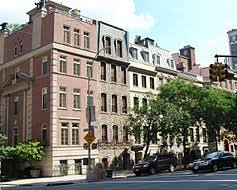 Mansions on Sutton Place
Mansions on Sutton Place
East 56th Street offers pre and post-war buildings and river views at Sutton Place. East 55th Street is similar, but also home to A La Mode, an ice cream shop at 360 East 55th Street.
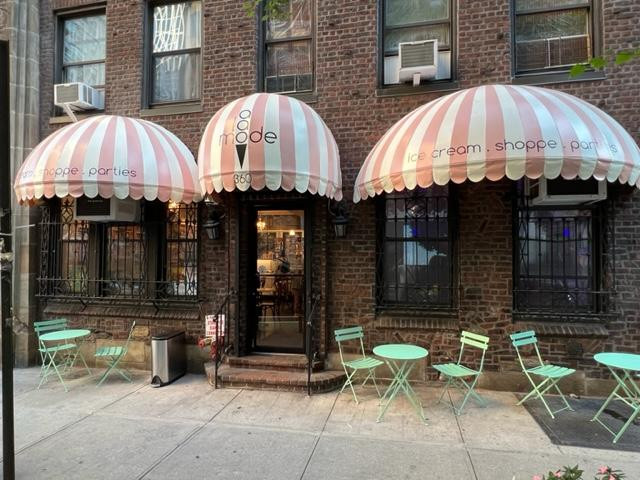 A La Mode Ice Cream Shop on East 55th Street
A La Mode Ice Cream Shop on East 55th Street
A La Mode is a charming ice cream shop with unique homemade flavors. I enjoyed Pink Sprinkle and Partly Cloudy flavors.
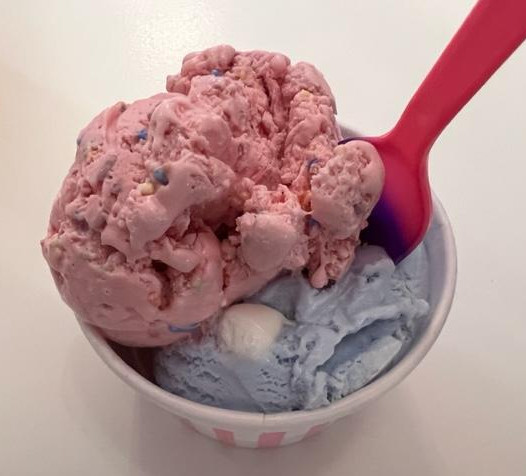 Pink Sprinkle and Partly Cloudy Ice Cream Flavors
Pink Sprinkle and Partly Cloudy Ice Cream Flavors
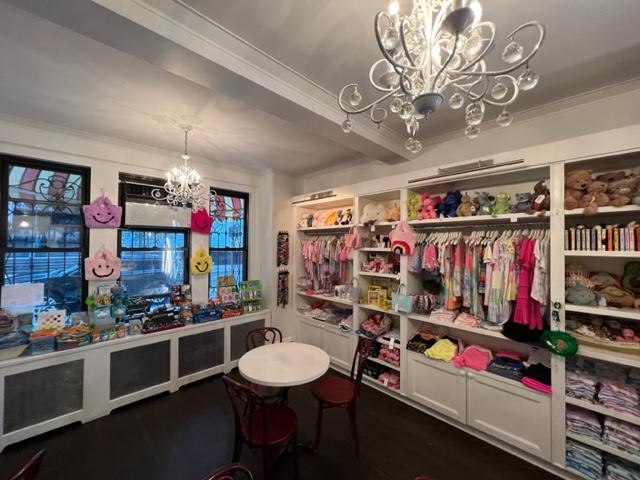 Inside A La Mode Ice Cream Shop
Inside A La Mode Ice Cream Shop
Rounding the corner onto East 54th Street, Sofia Pizza Shoppe at 989 First Avenue and Marinara Pizza at 985 First Avenue offer great pizza options. Sofia Pizza’s Sicilian slice is highly recommended, while Marinara Pizza offers delicious, freshly baked slices.
At the end of East 54th Street by Sutton Place, stairs lead to Sutton Place Park North, with benches overlooking the Queens and Roosevelt Island skyline.
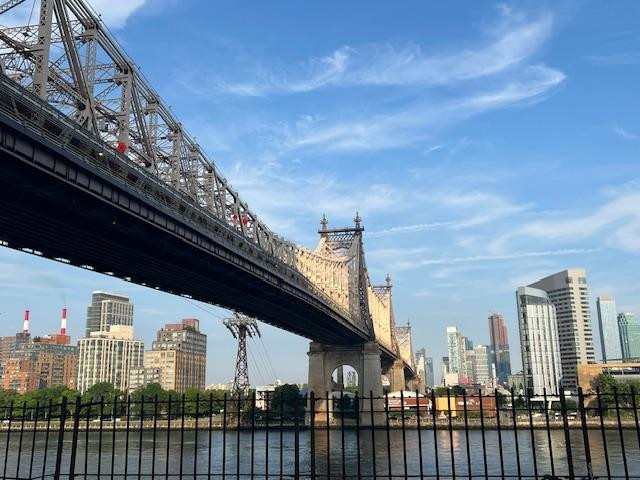 Queensboro Bridge View Towards Brooklyn
Queensboro Bridge View Towards Brooklyn
Walking down East 54th Street from the park, Recreation Center 54 at 348 East 54th Street and the Neighborhood Playhouse School of Theater at 350 East 54th Street are notable landmarks. Recreation 54, built in 1911, retains original details.
The Neighborhood Playhouse School features a plaque for Sanford Meisner, known for the ‘Meisner Technique’ of acting.
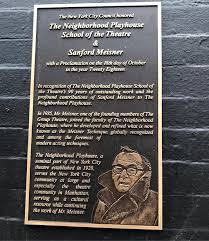 Sanford Meisner Plaque at the Neighborhood Playhouse School
Sanford Meisner Plaque at the Neighborhood Playhouse School
At the other end of East 54th Street by Second Avenue, The Connaught Tower apartment complex includes a public space with Alexander Liberman’s sculpture ‘POPS209: Accord.’
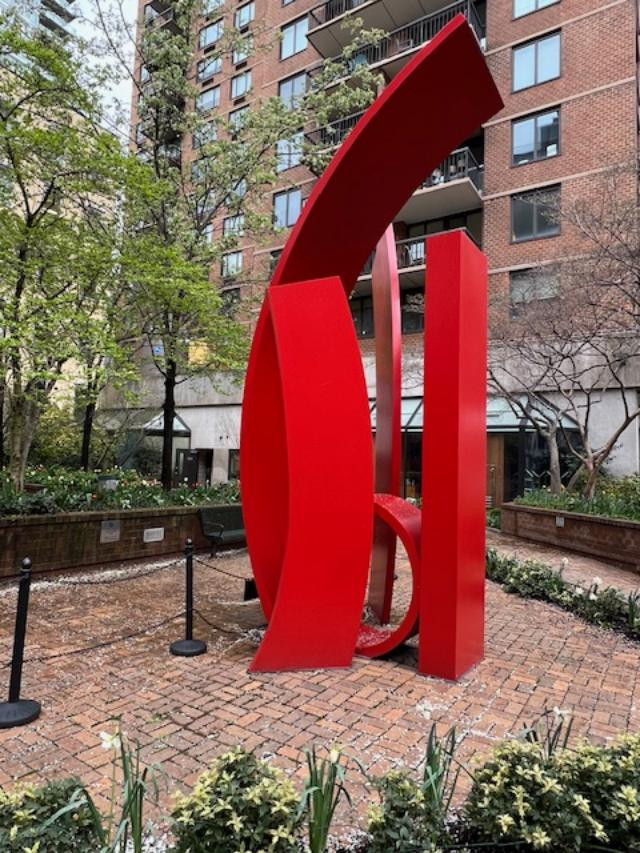 POPS209: Accord Sculpture by Alexander Liberman
POPS209: Accord Sculpture by Alexander Liberman
Continuing onto East 53rd Street, 413 East 53rd Street, a small red brownstone, stands out among larger buildings.
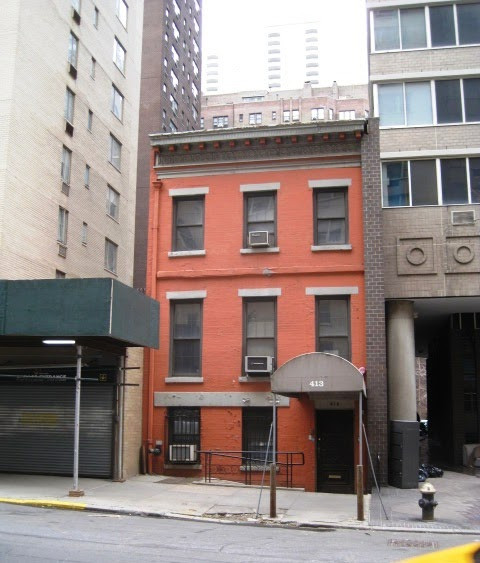 413 East 53rd Street, A Historic Brownstone
413 East 53rd Street, A Historic Brownstone
This building has a rich history, reflecting the neighborhood’s transformations.
At the corner of East 53rd Street and First Avenue, a doorway at 400-402 East 53rd Street reveals a hidden garden.
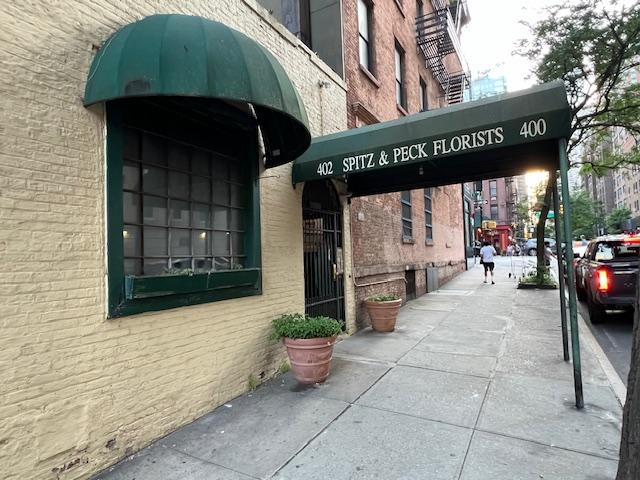 Secret Garden Entrance on East 53rd Street
Secret Garden Entrance on East 53rd Street
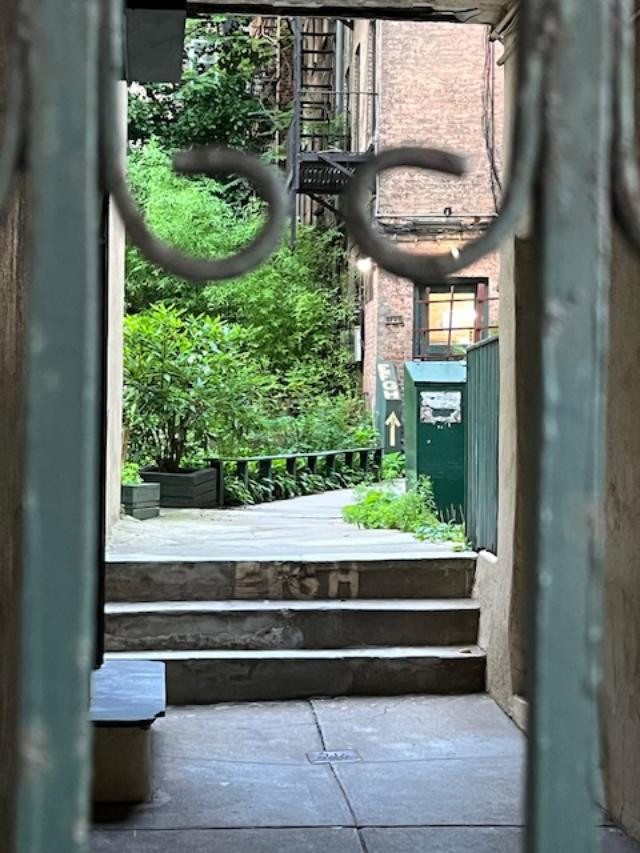 Hidden Garden Behind a Doorway
Hidden Garden Behind a Doorway
Further down East 53rd Street, two wooden homes at 312 & 314 East 53rd Street are among Manhattan’s last remaining wooden houses and are landmarked.
 312 & 314 East 53rd Street, Historic Wooden Homes
312 & 314 East 53rd Street, Historic Wooden Homes
Built in 1866 by Civil War veterans, these French Second Empire style homes are a unique piece of New York City history.
Across the street, Éclair Bakery at 305 East 53rd Street is a top independent bakery.
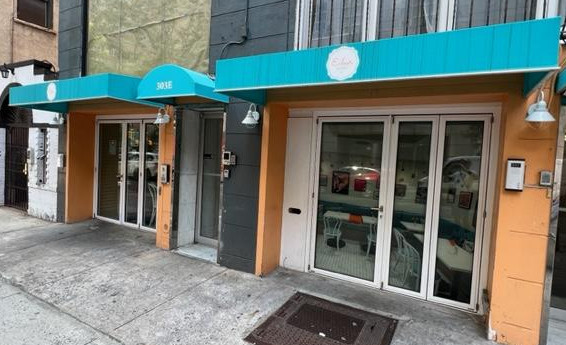 Éclair Bakery on East 53rd Street
Éclair Bakery on East 53rd Street
Éclair Bakery offers delicious pastries, quiches, and sandwiches at reasonable prices. The mini doughnuts and éclairs are highly recommended.
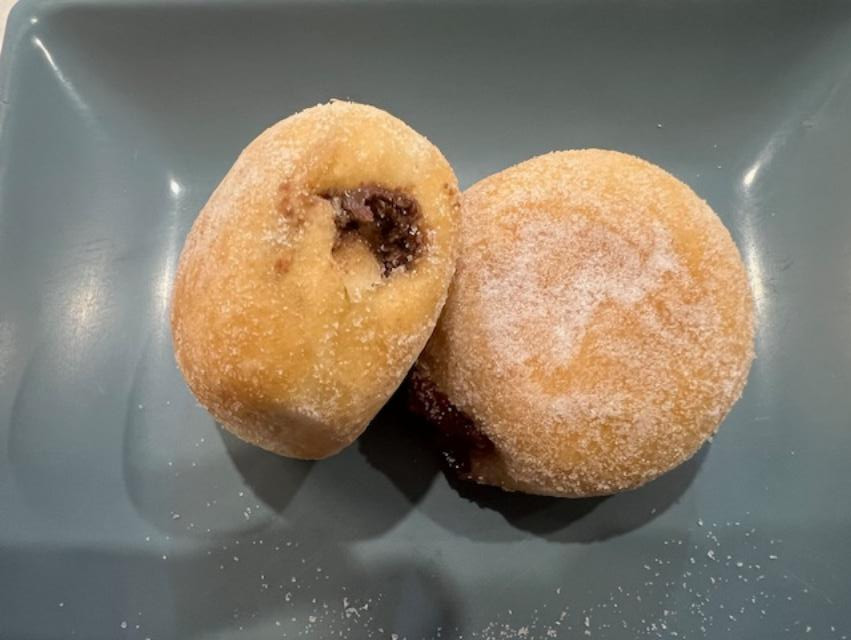 Nutella and Strawberry Mini Doughnuts at Eclair Bakery
Nutella and Strawberry Mini Doughnuts at Eclair Bakery
 Savory Sandwiches at Éclair Bakery
Savory Sandwiches at Éclair Bakery
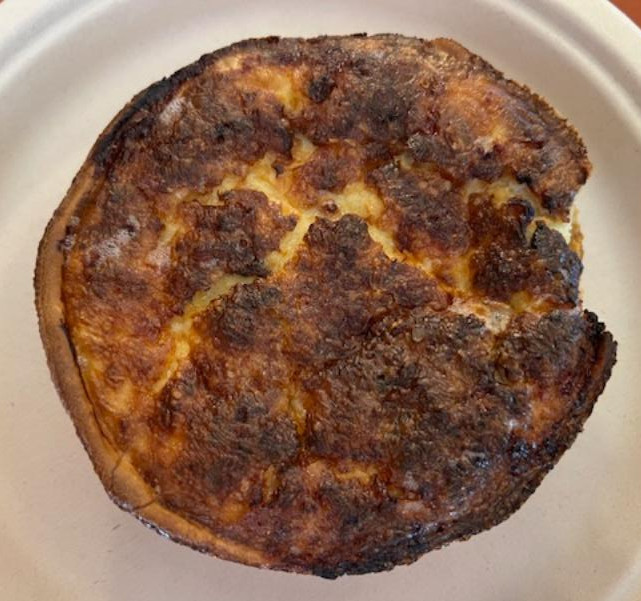 Ham and Cheese Quiche at Eclair Bakery
Ham and Cheese Quiche at Eclair Bakery
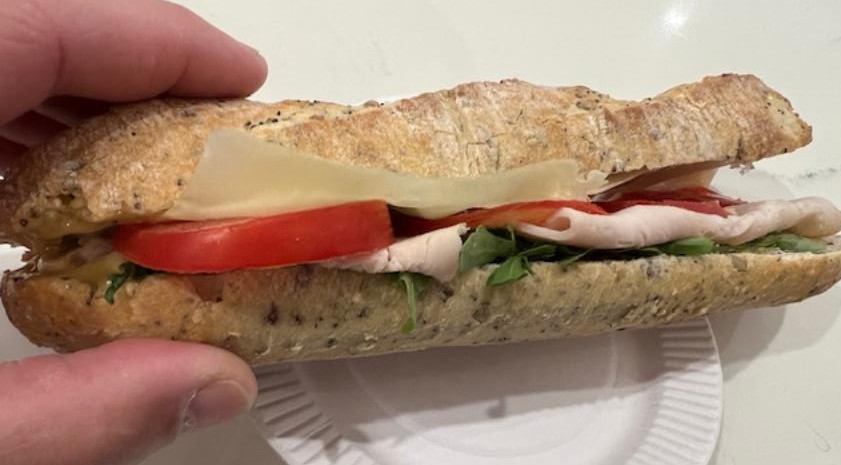 Turkey, Swiss, and Tomato Sandwich from Éclair Bakery
Turkey, Swiss, and Tomato Sandwich from Éclair Bakery
East 52nd Street towards the river is filled with pre and post-war buildings and embassies. East 51st Street marks the border between Turtle Bay and Sutton Place East, with a mix of modern and older buildings.
At the corner of East 51st Street and First Avenue, the former Beekman Mansion site leads back to Peter Detmold Park. 328 East 51st Street, a yellow townhouse, was once home to actress Katharine Cornell.
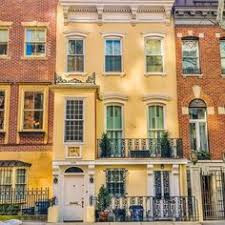 328 East 51st Street, Yellow Townhouse with Sculptures
328 East 51st Street, Yellow Townhouse with Sculptures
East 50th Street and Beekman Place feature classic brownstones and consulates. East 49th and 48th Streets transition to modern buildings catering to the United Nations.
Two great restaurants remain between East 49th and 50th Streets: Mee’s Noodles and La Vera Pizzeria.
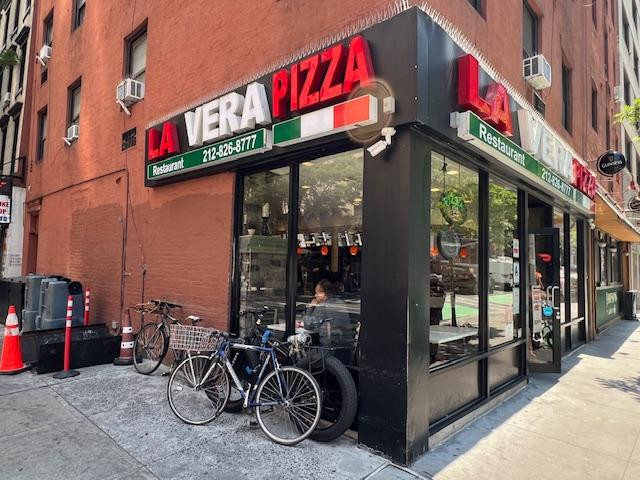 La Vera Pizzeria on Second Avenue
La Vera Pizzeria on Second Avenue
La Vera Pizzeria is a popular spot for pizza, especially after work hours.
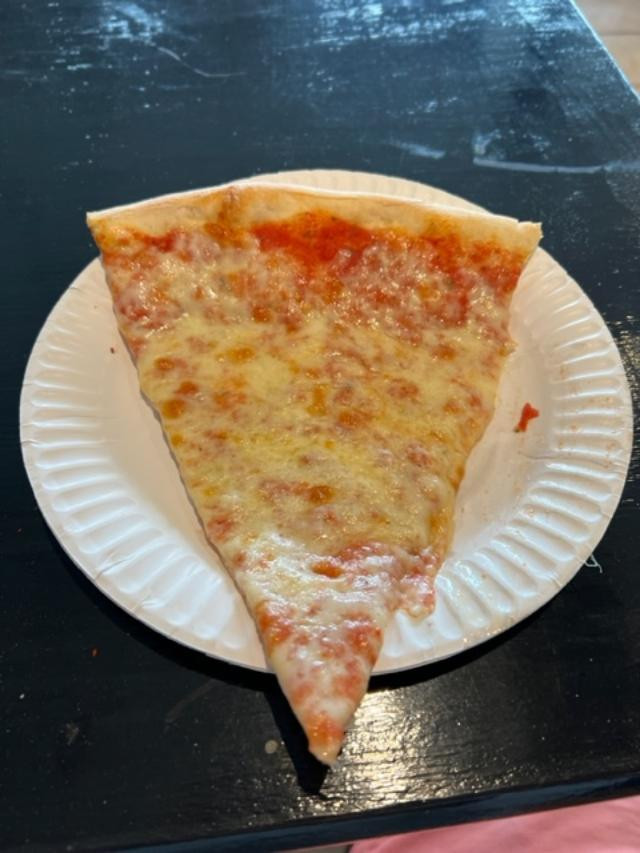 Cheese Pizza at La Vera Pizzeria
Cheese Pizza at La Vera Pizzeria
This part of the city, like others, is evolving, with brownstones giving way to modern structures. Yet, many blocks retain a neighborhood feel, filled with interesting buildings, restaurants, parks, and river views. Sutton Place is a wonderful area to explore and enjoy.
Throughout my walk, the song “Laughter in the Rain” by Steve Tyrell and Neil Sedaka played in my head, adding to the cheerful atmosphere of the day.
Places to Eat:
- Flip – Bloomingdale’s: 1000 Third Avenue, New York, NY 10022
- Jimbo’s Hamburger Place: 991 First Avenue, New York, NY 10022
- Go Noodle Chinese Restaurant: 1069 First Avenue, New York, NY 10022
- La Vera Pizza: 922 Second Avenue, New York, NY 10017
- Marinara Pizza: 985 First Avenue, New York, NY
- Sofia Pizza: 989 First Avenue, New York, NY 10022
- A La Mode Ice Cream Shop: 350 East 55th Street, New York, NY 10022
- Éclair Bakery: 305 East 53rd Street, New York, NY 10022
Places to Visit:
- 24 Sycamores Park: 501 East 60th Street, New York, NY 10065
- Peter Detmold Park: 454 East 51st Street, New York, NY 10022
- General MacArthur Park: East 48th to East 49th Streets & FDR Drive, New York, NY 10022
- Sutton Place Park North and South: Between East 54th and East 53rd Street and FDR Drive, New York, NY 10022
Places to Shop:
- The Philip Colleck Ltd.: 311 East 58th Street, New York, NY 10022
- Zeze Flowers: 938 First Avenue, New York, NY 10022
